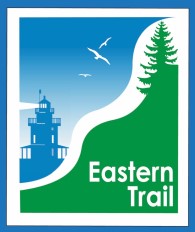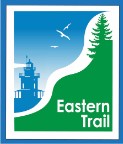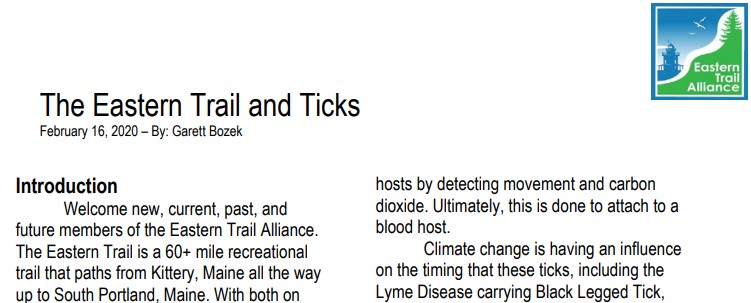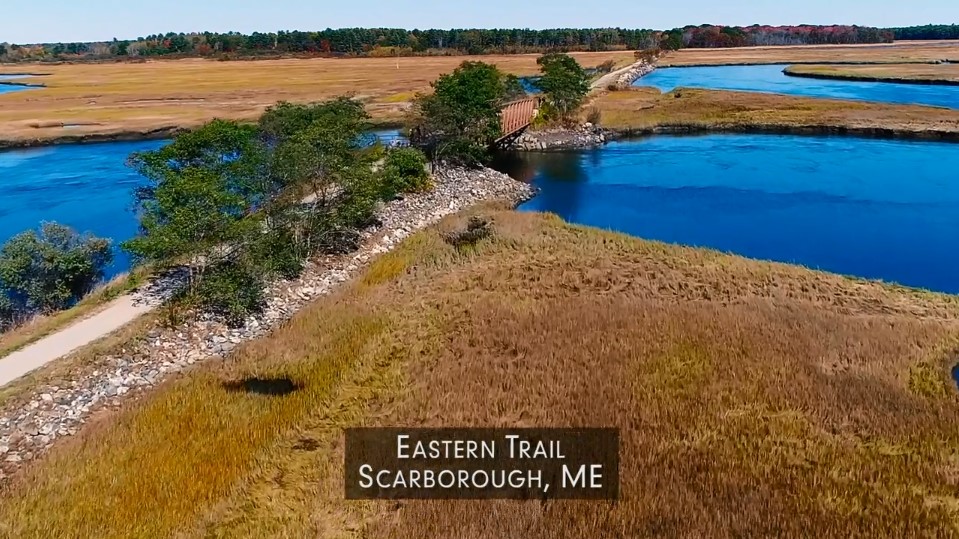[Eds. note: This article addresses issues on segments of the East Coast Greenway in Maine, of which the Eastern Trail is a major segment. It also addresses legislation currently being considered, LD 2124 – “An Act To Create the Rail Corridor Use Advisory Council Process.” This bill’s passage will set up a process at the Maine Department of Transportation to allow it to consider other uses for rail corridors, such as trails, instead of them continuing to sit idle. It’s passage hopefully will help trails in Maine come to fruition in the future.]
A related article is here. An advocacy page on LD 2124 can be found here]
By Douglas Rooks, published March 11, 2020
Since its founding nearly 30 years ago, the East Coast Greenway has sought to create a 3,000-mile bicycle-pedestrian pathway from Key West, Florida, to Calais – a vision fully equal to the Appalachian Trail, whose terminus at Mount Katahdin has become the summit of hiking achievement for generations of outdoors enthusiasts.
Unlike the AT, the Greenway is designed to connect urban population centers, and to become as viable for commuting as shuttles, buses and commuter rails; one of its most successful segments is in the “Research Triangle” around Raleigh, North Carolina, where thousands of cyclists use it daily.
Portland became a focus early on, and was a launching point for an exploratory tour in 1994; a decade later, seven cyclists started from Calais and traveled the entire route in 55 days. Maine, with its relatively wide-open spaces, seems an easy sell for construction of a recreational pathway heavily used by tourists.
But that hasn’t been the case.
The Eastern Trail – which runs 29 miles from Kennebunk to South Portland and includes a highly visible bridge over the Maine Turnpike – is a designated Greenway segment. It follows an active underground natural gas pipeline built on an old railroad right of way, with full support from the pipeline owners.
In other areas, however, trail advocates have run into strong, and sometimes unstinting resistance from passenger rail enthusiasts, who insist that every rail and tie must remain in place – even on abandoned, often state-owned lines.
The crown jewel of potential trail commuter routes in greater Portland is the old St. Lawrence & Atlantic line that runs from downtown Portland across Back Cove, behind the B&M Baked Beans plant and then north to Yarmouth for nine miles. It parallels the Maine Central tracks that host the Amtrak Downeaster, and ended freight service in 2013. Yet suggestions for converting it to trail use remain embryonic.
The forces contending over the future of old rail lines were on full display March 5, during a hearing before the Legislature’s Transportation Committee on LD 2124, a governor’s bill to create a Rail Corridor Use Advisory Council.
Legislative impasse
The late-filed bill was the Department of Transportation’s attempt to resolve deadlocks over two bills concerning other Greenway segments: the Merrymeeting Trail, 25 miles from Topsham to Gardiner (LD 1141), and an extension of the Downeast Sunrise Trail, an 86-mile segment in Hancock and Washington counties, by another 15 miles, from Ayers Junction to the Greenway terminus in Calais.
Sponsors of those bills, Rep. Charlotte Warren, D-Hallowell, and Sen. Marianne Moore, R-Calais, urged adoption of the advisory council as a way of allowing the committee, as Warren put it, “to get out of the middle of the annual railroad/trail arguments.” She called it “the most comprehensive, fair and thorough process” she’s seen.
Moore talked about the positive impact of the Downeast Sunrise Trail – up to $1 million annually – for communities from Ellsworth to Machias that have few other economic opportunities. She said removing rails and rebuilding the railbed, fixing washouts and bridge failures, makes the return of rail service more likely; existing ties and rails would have to be replaced anyway.
Advocates emphasize that trails on state “railbanked” corridors are interim uses, and that – should trains prove feasible – must be relocated. Rep. Anne Perry, D-Calais, pointed to Denton, Texas, where such a trail was moved when a new freight line was opened.
Read the entire article online (Portland Phoenix) here.














